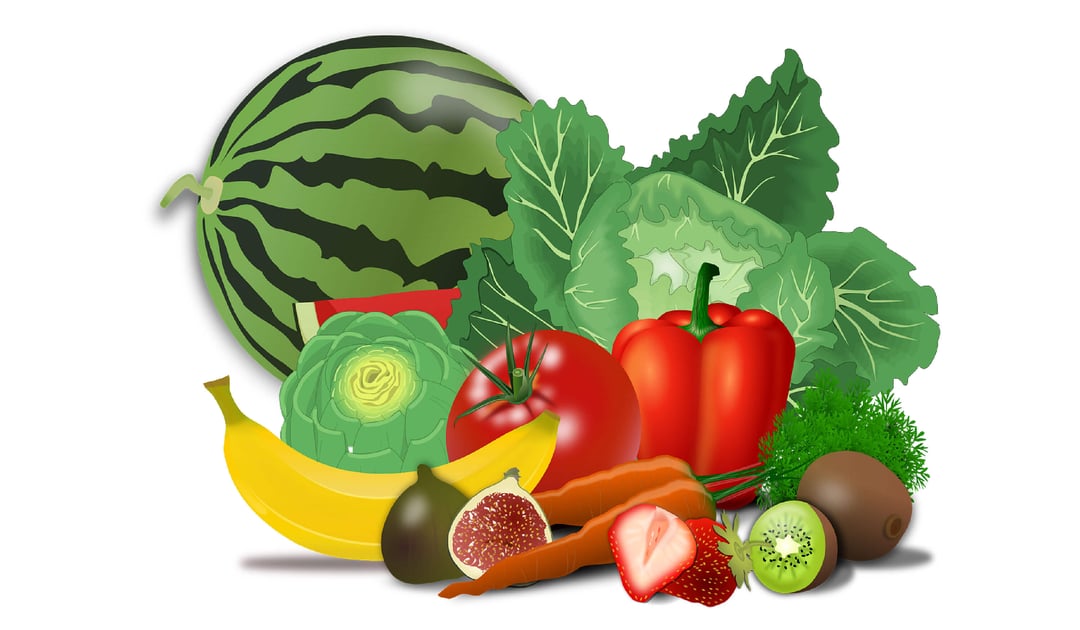
They say everything in life has a season, and in freight & logistics, produce season is a key one that occurs in the warmer months each year. More specifically, produce season in freight and logistics is when the volume of produce shipping goes way up because the volume of fresh produce being produced goes way up. And while this increased volume certainly has direct effects on the sleep schedules of produce shippers, it has implications across all of freight and logistics as well. Why? Because there is finite supply of labor, containers, trucks, chassis, warehouse space, etc., and that produce will compete with just about any other product for those resources. That in turn can affect shipping rates. In other words, produce season in freight and logistics matters beyond the primary consumers of grocery stores and restaurants.
What is produce season?
Produce season is generally considered to begin in February and run through July. The season starts earlier in southern states with warmer climates and wraps up later in northern states with cooler climates. Produce season reflects when fruits, vegetables, grains, oats - farm-produced crops - are most harvested and thus require transport to make it to people's plates at peak freshness. This leads to a surge in shipping volume. But unlike some surges that surprise shippers and carriers, this one occurs every year around the same time. So successfully navigating produce season freight & logistics is largely based on proper planning - though of course it's not immune to outside market factors.
What is a produce shipper?
A produce shipper is a company that ships produce, which is provided/produced by a grower. In some cases the grower/shipper is the same entity. But in others, a grower may work with a separate produce shipper to handle not only shipping responsibilities, but also often marketing responsibilities. In these cases, the shipper is also considered a Growers’ Agent/Commission Merchant under the Perishable Agricultural Commodities Act (PACA). At any rate, the grower is where the produce process begins, and the shipper coordinates how to get it to the broader marketplace.
How is produce transported?
Produce can be transported using any of the major freight methods, ocean (for international shipping), truckload (and LTL), rail or air - and any combination of these. The most common domestic method is via truck, which accounts for about 70% of food transportation, followed well back by rail, which comes in around 17%. Since produce season revolves around fresh produce, that means most of these fruits and vegetables require a "cold chain" of temperature-controlled environments. In produce, that cold chain actually starts at the grower stage, as immediately after harvest, pre-cooling is needed to remove heat from the field. Just an hour between harvest and pre-cooling can cost a day of shelf-life.
Throughout the produce transport process, keeping temperatures consistent is vital, so temperature-controlled shipping using what are known as reefers is a must. Some other musts to consider when shipping produce include:
- Temperature level - In conjunction with temperature-controlled shipping, maintaining the right temperature for the right product is key, with the typical produce freshness needs ranging from 32 to 60 degrees.
- Shelf life - As in, some types of produce can only be on the shelf a day or two, while others can make it more like a week. They're broken up into light-density, medium-density, and high-density categorizations.
- Packaging - Account for the potential of damage, moisture, etc. when considering how to package specific produce items. That may involve plastic lining. And don't forget insulation!
- Ethylene - Fruits and vegetables release ethylene gas, but some release more than others, and when exposed to too much, tomatoes and peppers among other items ripen rapidly. So keep those separated for longer shelf-lives.
- Shipping method - Reefer shipping is available via truckload and intermodal container, so if routes sync up, either may be a possibility. But remember there's a ticking clock on freshness, so the shipping time is vital.
- Tracking and technology - Many shipping methods allow you to track your shipment every step of the way, as well as the shipping temperature. Plus, you may be able to adjust temperatures remotely when needed.
- FMSA regulations - The Food Modernization Safety Act requires certain factors be met when transporting produce, including proper training, clean vehicles, safe temperatures, and compliance documentation.
If you're ready to take the next step, at InTek Freight & Logistics, we can help. Just tell us what you need and we'll discuss how our expertise can help with the unique shipping challenges your business faces. Rather do a bit more research first? View our Freight Guides for comprehensive articles and eBooks on all things freight and logistics.
And here are a few pieces explaining temperature-controlled shipping:
- Refrigerated Intermodal for Temp Control Shippers
- Temp Controlled Intermodal Service
- Reefer Freight Defined in 100 Words
Get Updates
Featured Articles
Categories
- Freight & Shipping Costs (54)
- Freight Broker (60)
- Freight Forwarder (2)
- Intermodal Transportation (184)
- International & Cross Border Logistics (43)
- Logistics & Supply Chain (420)
- Logistics Service Provider (77)
- LTL (39)
- Managed TMS (49)
- News (39)
- Supply Chain Sustainability (12)
- Transportation Management System (37)
- Truckload (122)
- Warehousing & Distribution (50)



